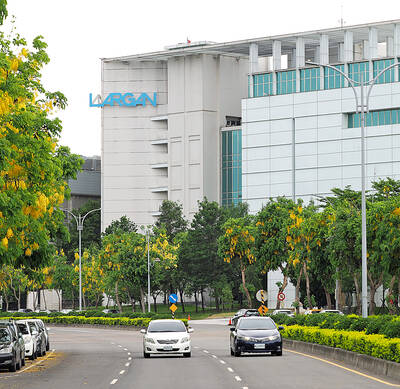The initial public offering (IPO) market just got a shot of caffeine from JDE Peet’s BV. Do not expect other consumer listings to get such a rush.
The owner of Peet’s Coffee, Douwe Egberts, Kenco and Tassimo on Friday priced shares in its IPO at 31.50 euros, in the upper half of the offering range, valuing the company at 15.6 billion euros (US$17.3 billion), and rose to about 35.50 euros in mid-morning trading.
The biggest European IPO this year, pulled off in a swift 10 days, is a remarkable feat for a consumer business in the midst of a pandemic and a looming global recession.

Photo: Bloomberg
However, JDE Peet’s has been uncannily well-placed to capitalize on changing consumer habits during lockdown, the prospects for reopening and a resurgence in equity markets.
The Dutch company was floated by JAB Holding Co, the investment fund backed by Germany’s billionaire Reimann family. Cornerstone investors, including funds run by George Soros’ firm, had agreed to take up one-third of the offering, setting the tone.
In a world crowded with coffee chains, JDE Peet’s gets 80 percent of its sales from coffee that is drunk at home. That meant it benefited as corner cafes shuttered and people working from home were forced to become their own baristas.
Now that they can start going out again, it is ready to serve them their favorite hot beverage too at the Peet’s Coffee chain. Just as Nestle SA benefited from people looking to stock up on the Starbucks-branded coffee it sells in supermarkets, so JDE Peet’s might gain new customers at its cafes if they discovered its products in the grocery store during lockdown.
As consumers navigate post-lockdown life, JDE Peet’s looks well-insulated. That might explain why the valuation, as of mid-morning trading, approached that of Starbucks Corp on a calendar 2019 enterprise-value-to-EBITDA basis.
With consumers likely pulling in their purse strings, homemade coffee might be more popular than pricey takeaway lattes. Yet the valuation might also reflect optimism about reopening, and expectations that people will be eager to get out and about.
Early indications from US retailers, such as discount chain owner TJX Cos Inc and even department store Macy’s Inc, are that sales have been stronger than expected since Americans were able to shop in person once again.
Let us not forget about the IPO timing with stock markets gaining from their lows in March. That might be one reason why Peet’s was so keen on an accelerated book build: to avoid any sudden market turbulence.
The fortunate confluence of factors might not come together for other consumer-facing groups looking to float or spin off a division.
L Brands Inc’s desire to eventually separate its Victoria’s Secret lingerie chain comes to mind. It was grappling with a tired image and too many stores even before the COVID-19 pandemic.
As for Peet’s, the successful float leaves it with firepower for further acquisitions. It plans to use the proceeds to cut debt — it aims to reduce the leverage ratio from 3.6 times to below three times by the end of the first half of next year — but it gets an acquisition currency in the form of equity.
Competition for coffee assets has been intense. There was a flurry of deals two years ago with JAB’s US$2 billion purchase of Pret A Manger, which sells coffee as well as food to go; Coca-Cola Co’s US$5.1 billion swoop on Costa Coffee; and Nestle’s US$7 billion deal for the rights to sell Starbucks coffee in supermarkets.
However, JDE Peet’s could get lucky here, too, particularly in the market for drinking coffee outside the home. With the lockdown-induced distress in malls and on main streets, it might be able to grab something to go for a better price.
Andrea Felsted is a Bloomberg Opinion columnist covering the consumer and retail industries. She previously worked for the Financial Times.
This column does not necessarily reflect the opinion of the editorial board or Bloomberg LP and its owners.

Taiwan’s foreign exchange reserves hit a record high at the end of last month, surpassing the US$600 billion mark for the first time, the central bank said yesterday. Last month, the country’s foreign exchange reserves rose US$5.51 billion from a month earlier to reach US$602.94 billion due to an increase in returns from the central bank’s portfolio management, the movement of other foreign currencies in the portfolio against the US dollar and the bank’s efforts to smooth the volatility of the New Taiwan dollar. Department of Foreign Exchange Director-General Eugene Tsai (蔡炯民)said a rate cut cycle launched by the US Federal Reserve

Handset camera lens maker Largan Precision Co (大立光) on Sunday reported a 6.71 percent year-on-year decline in revenue for the third quarter, despite revenue last month hitting the highest level in 11 months. Third-quarter revenue was NT$17.68 billion (US$581.2 million), compared with NT$18.95 billion a year earlier, the company said in a statement. The figure was in line with Yuanta Securities Investment Consulting Co’s (元大投顧) forecast of NT$17.9 billion, but missed the market consensus estimate of NT$18.97 billion. The third-quarter revenue was a 51.44 percent increase from NT$11.67 billion in the second quarter, as the quarter is usually the peak

The US government on Wednesday sanctioned more than two dozen companies in China, Turkey and the United Arab Emirates, including offshoots of a US chip firm, accusing the businesses of providing illicit support to Iran’s military or proxies. The US Department of Commerce included two subsidiaries of US-based chip distributor Arrow Electronics Inc (艾睿電子) on its so-called entity list published on the federal register for facilitating purchases by Iran’s proxies of US tech. Arrow spokesman John Hourigan said that the subsidiaries have been operating in full compliance with US export control regulations and his company is discussing with the US Bureau of

Pegatron Corp (和碩), a key assembler of Apple Inc’s iPhones, on Thursday reported a 12.3 percent year-on-year decline in revenue for last quarter to NT$257.86 billion (US$8.44 billion), but it expects revenue to improve in the second half on traditional holiday demand. The fourth quarter is usually the peak season for its communications products, a company official said on condition of anonymity. As Apple released its new iPhone 17 series early last month, sales in the communications segment rose sequentially last month, the official said. Shipments to Apple have been stable and in line with earlier expectations, they said. Pegatron shipped 2.4 million notebook